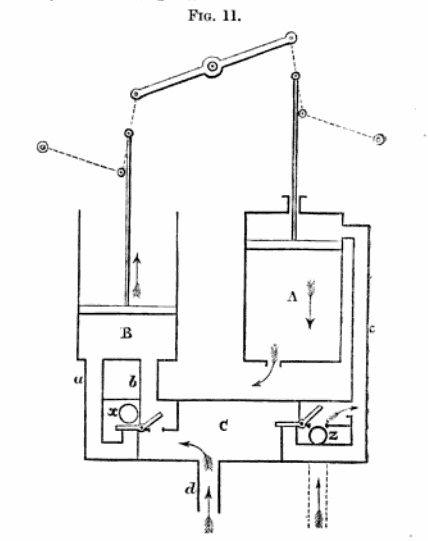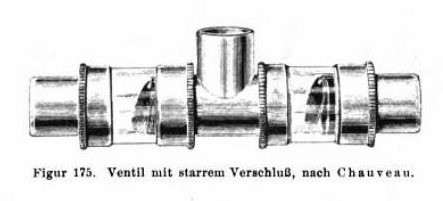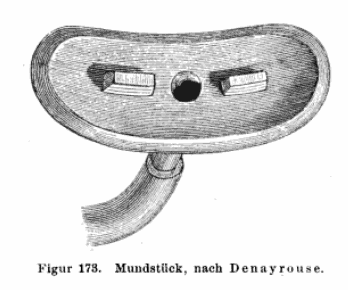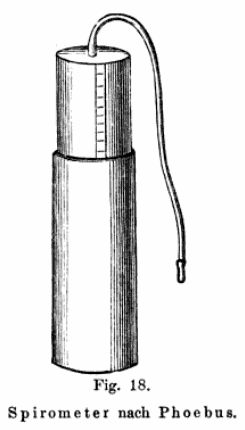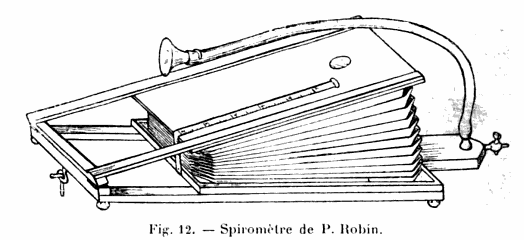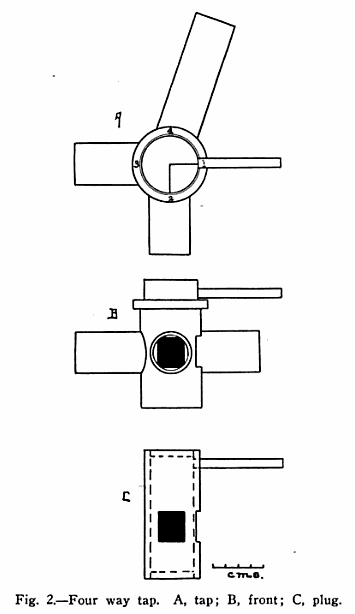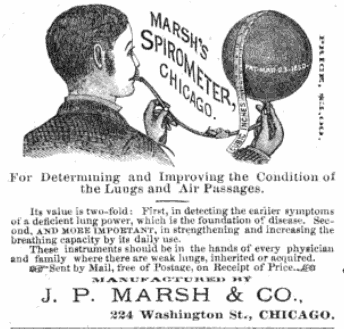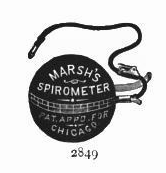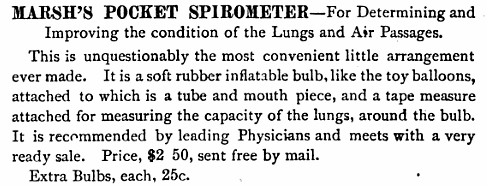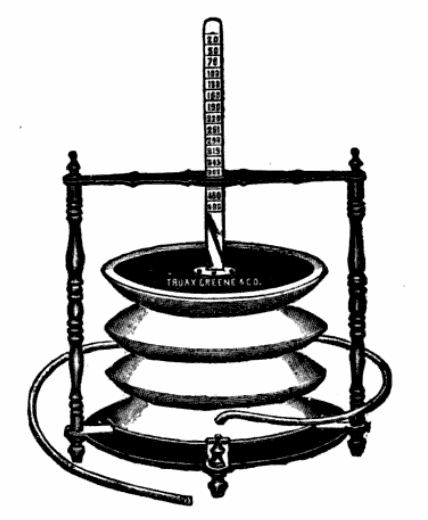
From: Spirometer measurement of oxygen consumption by the rebreathing method. By Charles Claude Guthrie, Archives of Internal Medicine, Volume 28, 1922, page 842.
“As is commonly known, the essential of rebreathing types of spirometers comprise a distensible closed space, as an elastic bag or spirometer; a supply of oxygen and means for introducing it into the apparatus; an absorber for removing carbon dioxide; a connection for a mouth or nose piece or mark; and means for measuring volume changes in the gas. The subject rebreathes for a definite period, usually ten minutes, and the volume change in the apparatus, after correction for pressure, temperature and water vapor, indicates the amount of oxygen consumed.”
“The spirometer shown in Figure 1. is very satisfactory. It consists of a vital capacity type of spirometer (floating bell form, Fig. 1, A), a soda-lime carbon dioxide absorber (Fig 1., B), a four-way tap (Fig 1., C), a gas mixing pump (Fig. 1, D) and a tank of oxygen.
“The three point suspension of the bell is very desirable. The bell moves vertically with little side sway or rotation and the scale, which is attached to the bell, remains directly behind the reading sight. The sight (Fig 1, E) is adjustable and may be set instantly against the zero mark of the scale. The scale on one side is numbered from below upward, so that the final reading directly represents the oxygen consumed, no other subtractions or calculation being required. The smallest scale divisions represent 20 cc.”
